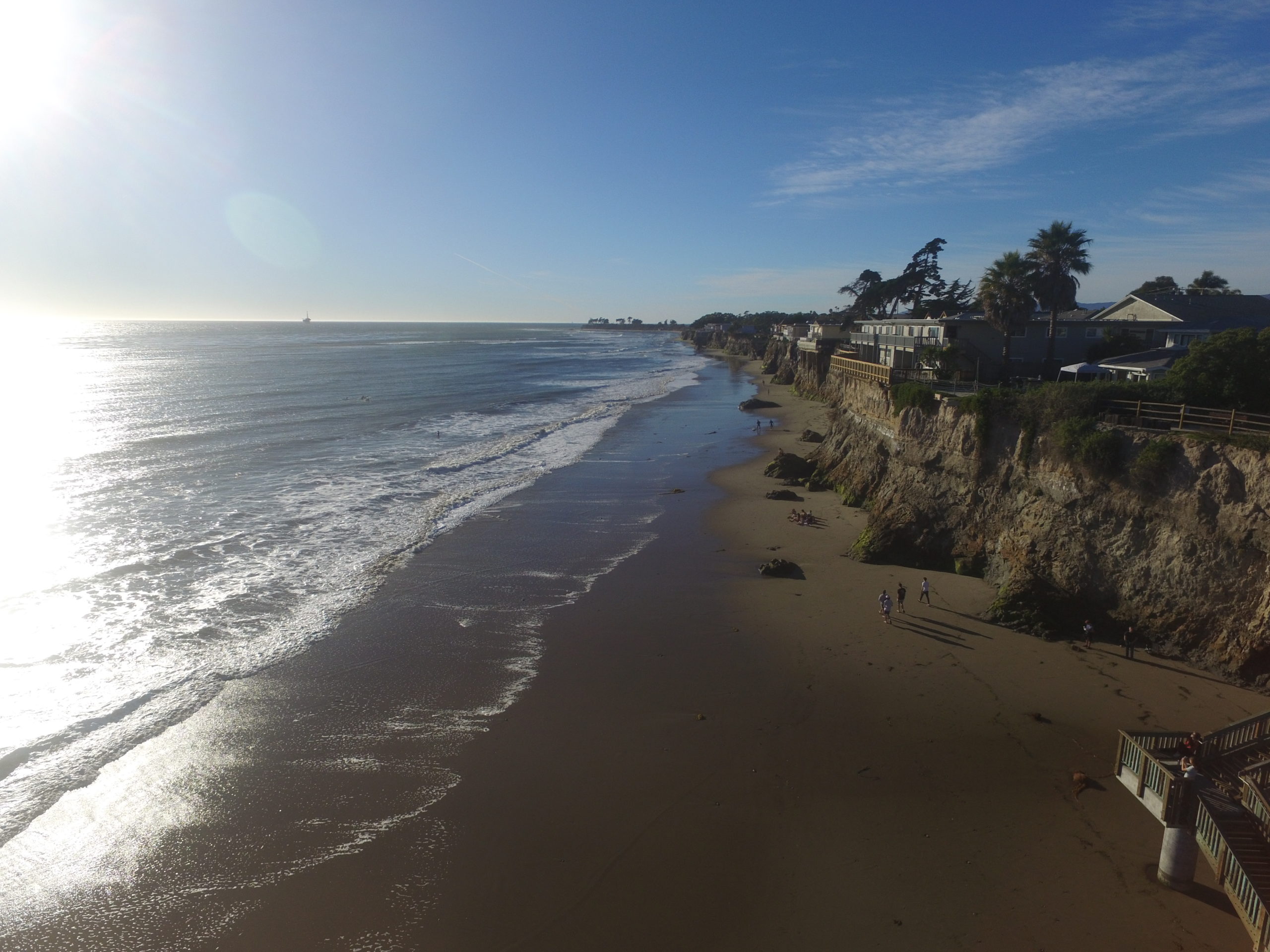Measuring Cliff Base Erosion in Isla Vista – Kevin Raver

Q: What personally brought your attention to erosion along the coastline?
A: In reality, the severity of the erosion along the cliffs came to my attention by my mentor Paul Alessio, who has been working on projects revolving around their retreat for years. One of the primary reasons I was interested in working with him on the project, however, was because when I was touring campuses to choose for my university experience, I of course checked out the UCSB lagoon and the beach. As I am a geology major, one of the things that stood out to me most wast how fragile the rocks of the cliffs were. I walked up to them to feel them and check their texture out of curiosity, and found that they crumbled into my hands very readily. I was shocked at how soft the rocks were and how there could be development atop them so close to the edge. So after I had chosen UCSB and when I heard about the work that Paul was doing in regards to them, and that he was looking for undergrads to help him with the research, I was very excited to speak with him about what interested him most about them which was of course, the rate at which they erode. As I too was fascinated by this question, it was very easy for he and I to begin working together on the project.
Q: What led you to specifically choosing Isla Vista as the location for your project?
A: Isla Vista was an easy choice. For one, as I mentioned, my advisor had already been doing work with them for years, and I too was interested in them as they were so close to home. Being that a huge part of the UCSB culture is the beach, and Del Playa is ‘where it all goes down’, and yet the cliffs so readily erode, it seemed almost urgent that we find out more about the environment that we find ourselves a part of. Additionally, with as much traffic as the beaches in Isla Vista see, it seemed imperative that we know more about the forces that affect them and how they change on short time scales, given that many of us are only even typically at UCSB for 2-4 years. Being around them for such a long time that is yet still so short, and seeing how they change so often and so quickly, it also imparts the amazing notion that geology, while it is typically seen as something that changes so slowly that they named a timescale after it, is happening right now and that in this amazing, unique environment we are afforded the opportunity of seeing and studying it firsthand. There are very few opportunities to study geology on short timescales and still yet fewer locations that allow for it to be studied by daily observation, and IV is one of them.
Q: Outside of your science-based interests, what else are you passionate about? Do you feel that these passions help you in your research?
A: Outside of my science based passions I am also passionate simply about the Earth and the environment. I love everything there is about our planet and long to see our understanding and appreciation of it heightened, which certainly feeds my passion for the science. I love getting out and seeing the Earth in all ways, whether it be walks, hikes, camping, or traveling, any opportunity which allows me either so see a new, foreign aspect of it or a familiar yet beautiful facet of nature I greet warmly. This ties into passion for the physical sciences quite nicely, as not only does it allow me to see more of the Earth, but also to understand what I see.
Other passions include working with my hands in almost anyway. As such, I love woodworking, welding, and making/fixing things in a very general sense. This is also quite applicable to my passion for geology as it is a beautifully hands on science, where you are quite frequently able to touch and feel what you are actually studying.
Q: Is there anything that you would want people to know about you, your project, or something that you are passionate about?
A: Ultimately I would just want to point out how amazing, beautiful, and unique our own backyard is. There is so much to see and learn from it that it is really quite astounding. With that in mind, however, I would also point out that it is delicate, as are all things in nature. It commands our awe, wonder, and curiosity, but it simultaneously demands our respect and patience. In regards to the cliffs in particular, they are easily taken for granted. Many sit atop them, enjoying the beauty and the splendor of the magnificent backdrop that is our own piece of the ocean, many more lay under them enjoying the shade they provide on those heart-breakingly beautiful sunny beach days; but few respect them for what they also are, which is potentially dangerous. they are changing rapidly, as those who live atop them can attest. Literal backyards fall from them frequently, and there are stories of individuals who have been hurt badly by pieces of them falling. While they are beautiful and fascinating, I would have people know that they are also dangerous.

Photos courtesy of Kevin Raver
